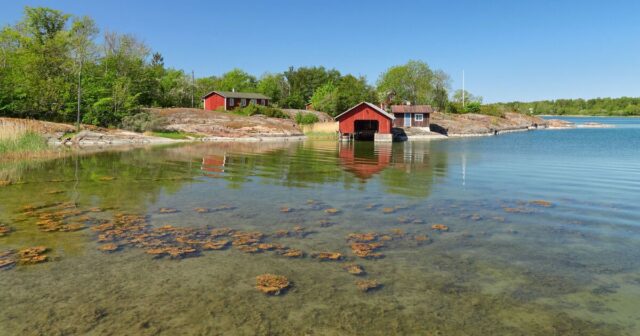Europe is a familiar destination for many of us, often serving as our annual sun-soaked retreat.
Whether it’s Spain, France, Greece, Italy or Portugal – or any other part of the continent – Britons are well-acquainted with these lands.
There are hardly any corners that Brits haven’t explored, and even fewer that we haven’t heard of.
However, there is an autonomous region – essentially a country within a country – that remains largely unknown.
The Aland Islands, or simply Aland, is technically a Finnish region where Swedish is predominantly spoken. However, it functions as an independent nation – and has its own parliament, legislation, and even a flag.
Since 1920, Aland has enjoyed autonomy, a status granted by the League of Nations, which gives it a unique position in Europe. It is an EU member and uses the euro, although its relationship with Brussels is governed in a highly distinctive manner.
To preserve the crucial sale of duty-free goods on ferries between Sweden and Finland, Aland is exempt from the EU’s VAT areas, allowing tax-free sales. But Aland’s political and economic structure isn’t its only unique feature.
The island is a stunningly beautiful destination, particularly in the summer, attracting Finns, Swedes, and Estonians to its sunny shores. With a mere population of 30,000, it is the smallest of the three autonomous territories in the Nordic region, and a third of these residents live in the capital, Mariehamn.
The Aland archipelago, a collection of 6,700 stunning islands, offers a unique blend of natural beauty and maritime history. The island’s rich history dates back approximately 7,500 years when the region’s first seal hunters discovered the landmass and began exploiting its abundant natural resources.
It was utilised by Stone Age and Bronze Age communities, followed by Iron Age inhabitants and later, the Vikings. Consequently, Aland is peppered with ancient monuments, including a 14th-century castle – Kastelholm Castle.
The Kastelholm area is considered one of the island’s ‘must-visit’ locations, boasting the castle, an open-air museum, the historic Vita Bjorn Prison which now serves as a Museum, and the Smakbyn restaurant and distillery.
Further away lies the decaying Bomarsund fortress area. Between 1809 and 1917, Finland and Aland were under Russian rule.
The Russians erected a grand fortress in the 1830s, which, despite damage from bombing during the Crimean War, still stands today.
For those interested in culture, there’s the Cultural History Museum of Aland and Aland Islands Art Museum, as well as the Maritime Museum that traces thousands of years of navigating the north’s turbulent waters.
Mariehamn, pedestrian-friendly and sprinkled with historical remnants, offers a variety of independent shops and restaurants.
If you’re a nature enthusiast, Aland is essentially a wild playground, with the Grottstigen nature trail in Geta remaining largely unspoiled by human activity.
This island is one of Europe’s concealed treasures, relatively unknown beyond the Nordic region. However, with its intriguing blend of cultures and extensive historical significance, it’s certainly not to be overlooked.





